One could travel across the country listening to tales of Route 66 by generations of American road-trippers from every state that have made the historic drive at some point. Many of these stories originate from the people and the places these travelers have encountered along this legendary stretch of pavement. Folks like George and Barbara, for whom Route 66, Missouri, is their home address, have given countless hours to make sure those who stop by in passing have stories to take with them and share so that generations to come know some history of a road once a thriving system in American transportation, travel, and adventure.

Off a two-lane stretch of historic Route 66 in Missouri is Gary’s Gay Parita Sinclair gas station, begging to pass along stories of its time here to anyone passing by and willing to take a few minutes to absorb this piece of Americana. George is a proud host as he tours the collection each day with the next group of wide-eyed road-trippers.

“This was Barbara’s mom and dad’s place,” George explains. “They owned it for some 40 years. Her dad was a truck driver. while he’s driving, he’s collecting things. When he retired, he set all this back up. This was an original gas station and garage and cabins from 1926. It was originally owned by Fred and Gay Mason. They passed, and eventually Barbara’s uncle bought the place and he sold this portion, about three or four acres, to Barbara’s dad, Gary. Her dad was collecting, so he set all this back up.”
You get a real sense of Gary from walking his collection and his appreciation for a time long gone, but a time rich with American pride and achievement that was worth preserving.
“There’s a theme park in California called Knott’s Berry Farm, and when Gary was in California, he worked at Knott’s Berry Farm as the train robber,” George says. “Barbara’s birth certificate lists her dad’s occupation as Entertainer, and her brother’s lists their dad’s occupation as Train Bandit. So, how many guys can say, ‘My old man’s a train bandit.’?”

“I was in Japan,” George says. “I retired from the service, and when I finally got finished with a contract overseas, I came back to Charleston and I met Barbara. She and I have been together for about 15 years now.”
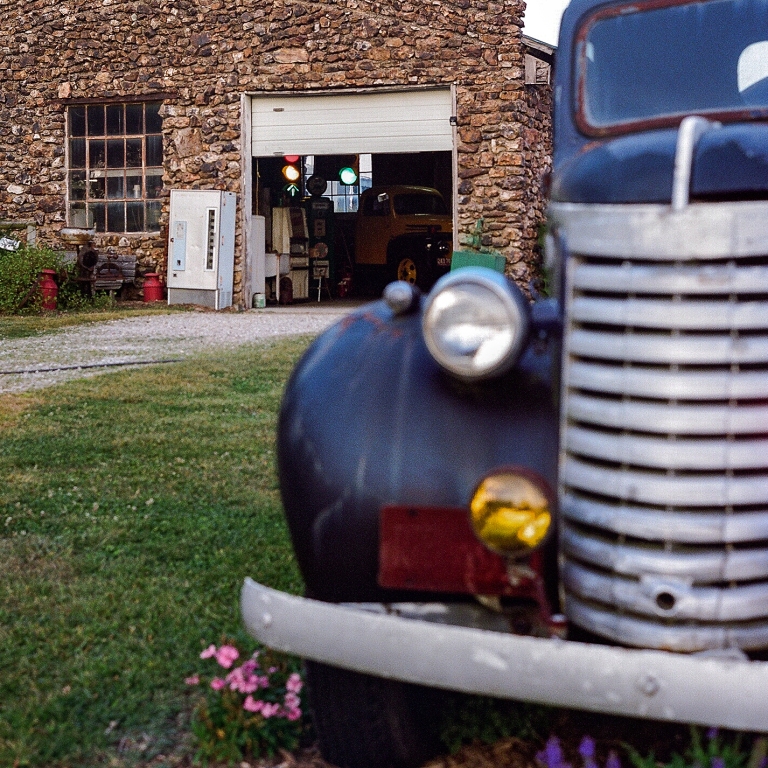
“All the stone is sandstone,” he explains of the original 1926 garage. “You can’t stick a shovel in the ground out here without hitting some. The folks back then were frugal, so they used what they had. They would have dug out a foundation and then built with the stone that they dug out of the ground. Locally, that’s what they call giraffe stone, all indigenous to the Ozarks.”
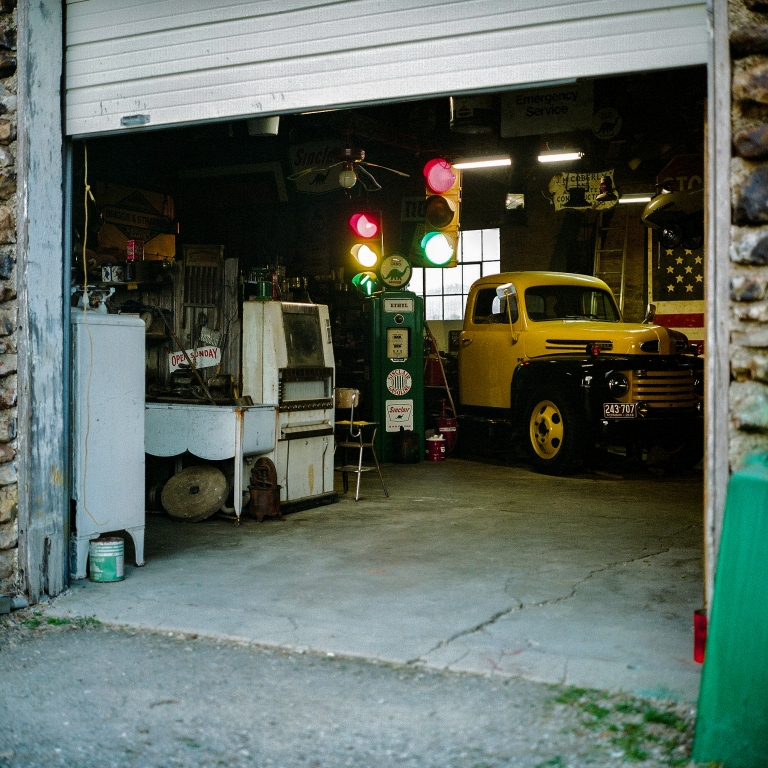

“This is a 1948 Ford,” he says of the mint classic parked in the old garage. “This one was restored by Barbara’s dad. It is is running condition.”
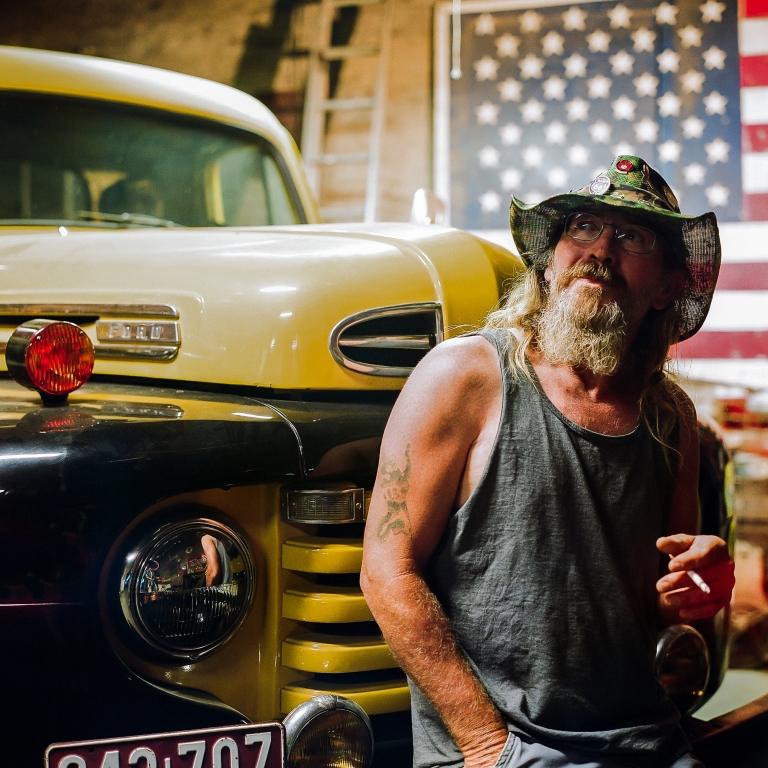
“Gary passed away in 2015, and Barbara’s mom passed within four months of that,” George explains. “So, she and I sold our house back east in South Carolina and came out here to carry things on. I’m a James Islander, that’s just the way it is, but now I am here, and at night I can hear the wind blow and it’s occasionally reminiscent of the beach. I knew absolutely nothing about Route 66 prior to coming out here. I was deeply entrenched in the east coast.”
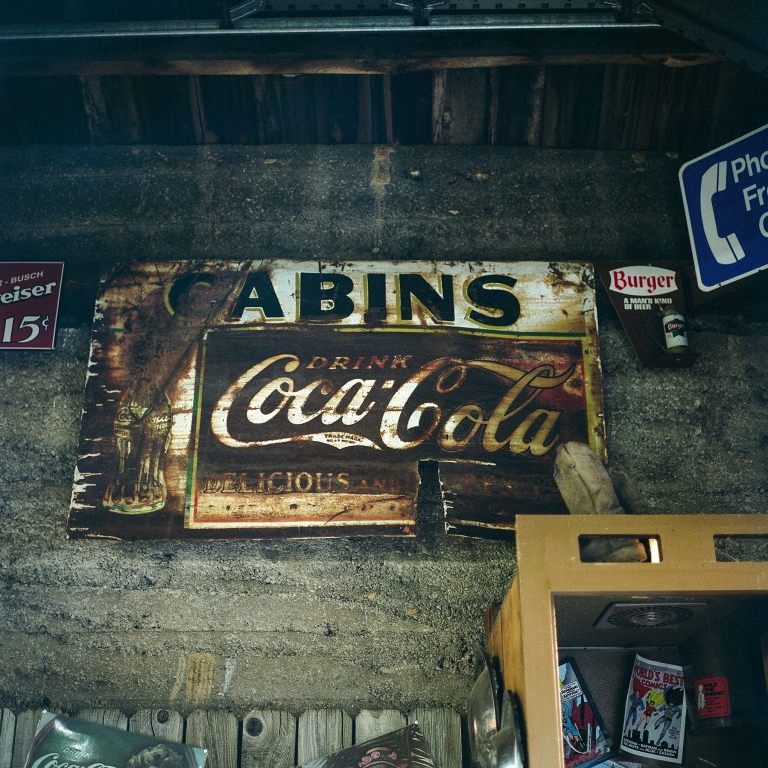
“That Coca-Cola sign there is from 1926,” George says. “That was original advertising for this place. That was like the standard way to move back then. Those cabins were back in this field over here until the original owner, Fred Mason, knocked them down when he closed everything in 1955. This place here is a recreation of Fred’s original station. Barbara’s dad rebuilt this all. In 1955, the original station burned down, for I think the second time. Out here, they didn’t have any fire equipment, so they had to stand across the street and watch it burn.”
In the heyday of Route 66, this place would have been welcome sight for the American road warrior, as much as it is a welcomed stop now for a journey down memory lane, a visit to yesteryear.
“They also had cabins behind the garage, and in ’55, he bulldozed them,” he continues. “Then, he just kind of stayed in the house until he passed two years later. It was a one-stop shop back then. It was a family thing going on here. His cousins owned the place right across the street, and it was a diner, general store, and hardware store. I think they even had one gas pump out front over there too. They were really clever. They were on top of it back then. They just happened to be in the right place at the right time.”

“I managed to scrounge up all the old license plates from all the stuff we had, except New Mexico,” he explains. “Our next-door neighbor came over, and it didn’t dawn on me until earlier today, he is originally from New Mexico. So, I said, ‘Dave, I want one thing.’ He said, ‘What’s that, George?’ I said, ‘I need a New Mexico license plate.’ He said, ‘Man, I think I got one in the garage. I’ll go get you one.’ So, this was done, just today. One project out of ten million, finished. I think it’s kind of cool. That’s all the states on 66.”

“That cop car is a ’51 Nash,” he says. “Suffice it to say, they didn’t have much speed, because they were heavy and the motors were underpowered. It would have come with a straight six motor, and they ran really well, but they didn’t have enough speed. So, if these guys were catching somebody, odds are they did it by the radio.”

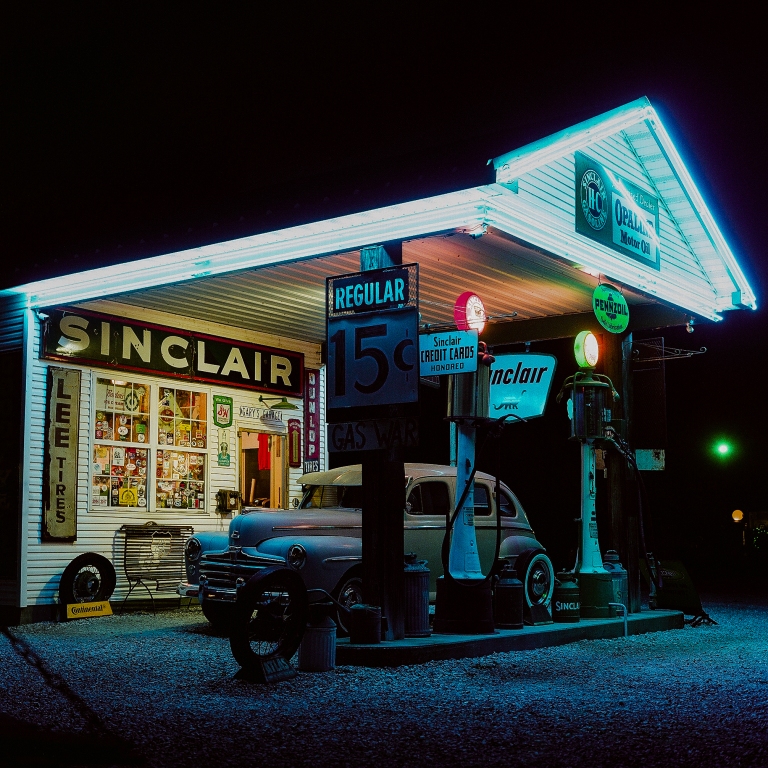
“Those are original gas pumps, and those date from 1924 to 1926,” George explains. “Those are true ‘Mae West’ pumps. People try and buy things, and I have to politely tell them no. This is a family collection, and we get so many foreign visitors, some of these folks have never seen this stuff. If I sold it, they wouldn’t have anything to look at.”
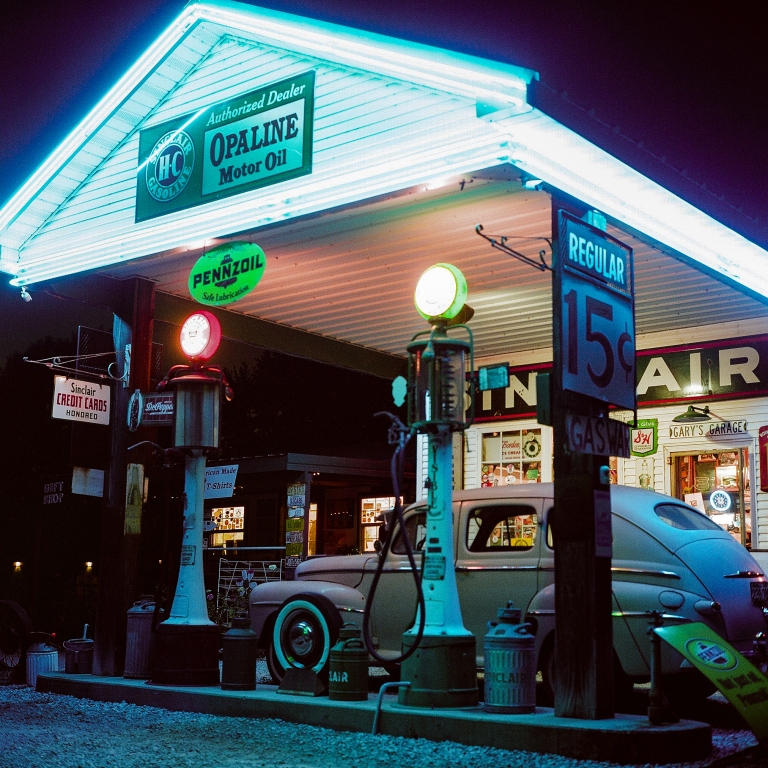
“We wanted everything to kind of pop from the road,” George says. “People pull over all the time thinking they can get gas. Happens all the time. The place didn’t serve gas after 1955. The original owner and his wife started this in 1926 and ran it until 1955. In 1953, his wife died. In 1955, he had the fire. After that, I think he just said, ‘I’m not going to to do this anymore.'”
Gary rebuilt this place as a tribute to honor the days he remembers growing up in America. Now, George and Barbara carry on the history.
“Gary would have sat in here and talked to folks just like I am talking to you,” he continues. “The cool thing was, that was his dream. Most folks never get there, but he lived his dream for a good while. Now, I get to travel vicariously, through everyone that stops by here along their way. A lot of the older businesses along 66 have faded by the wayside, but at the same time, there is a lot of rebirth going on. I’ve got friends in Kansas working on projects. I’ve got friends in Texas working on projects. I got friends resurrecting these old places.”
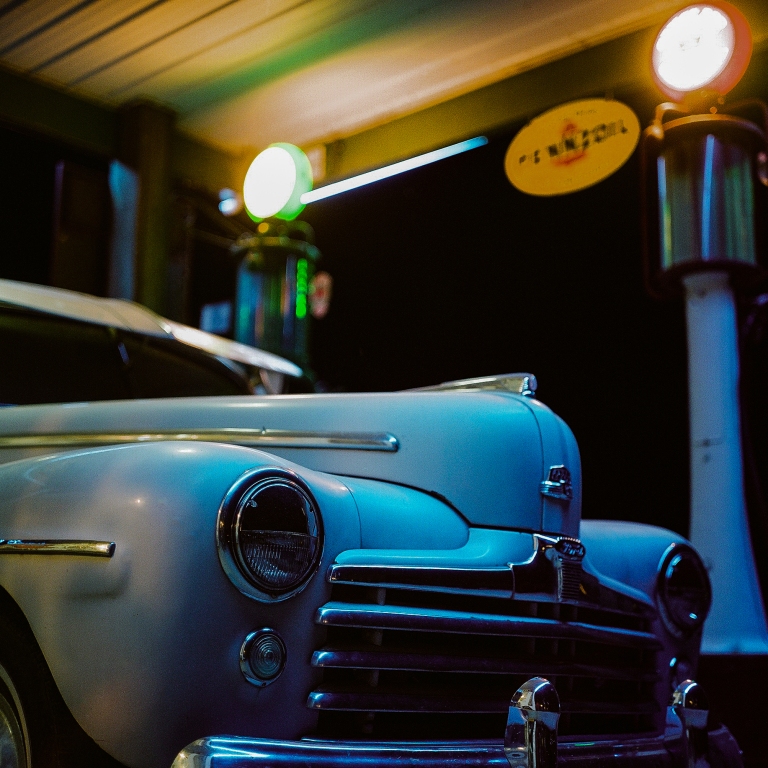
These roadside attractions are fitting tributes to the thriving small-businesses that kept America moving, and Route 66 was paved for that very purpose.
“Missouri was like all the rest of the states back then,” George explains. “They were strapped for cash, so how do you do it on a budget? Pull the prisoners out of the prison, have them hand mix concrete, lay it, and hand trowel that part of the road. In the state of Missouri, there are not many parts of the original pavement left. But the stretch up here is a fairly long one. I think it approaches a mile long, and it’s a good road. It’s in great shape. After they made the other road, people just took that, so the old road stayed in pretty good shape. It’s a photographer’s dream, because no one is there. Maybe it’s photogenic. I don’t know. You’re the guy.”
